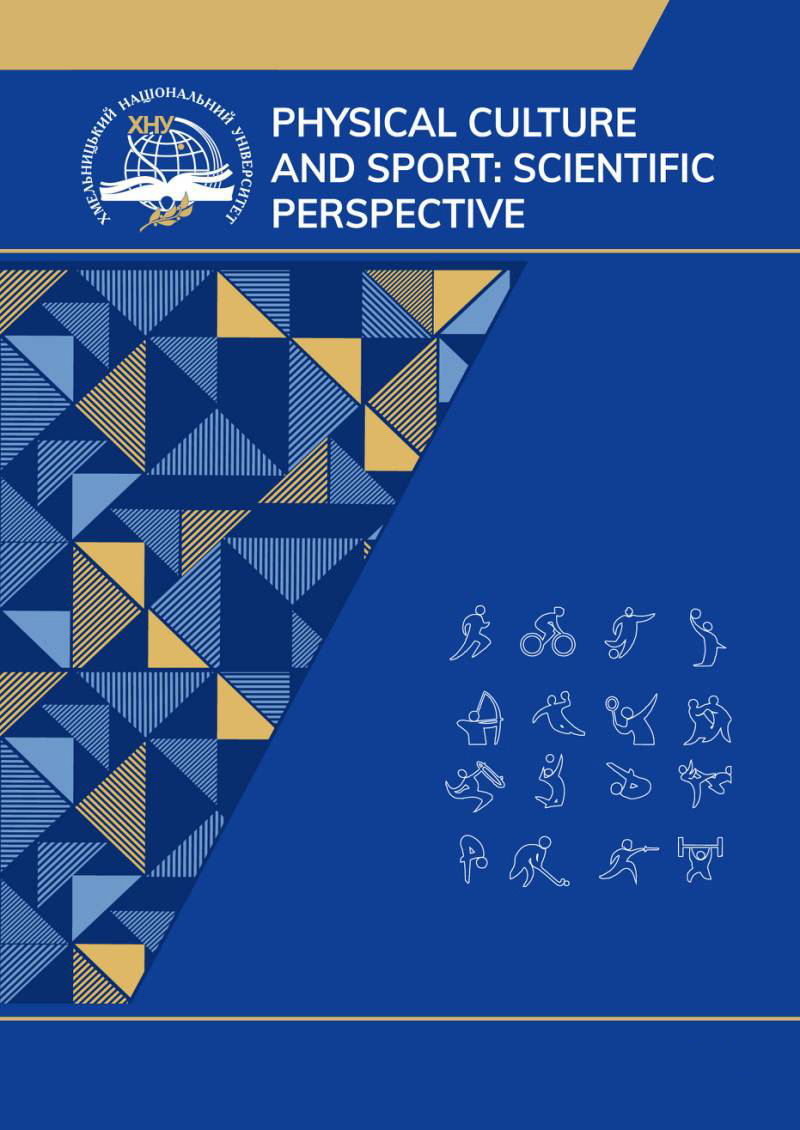PHYSICAL THERAPY OF MIDDLE-AGED PEOPLE WITH COXARTHROSIS IN THE OUTPATIENT STAGE OF REHABILITATION
DOI:
https://doi.org/10.31891/pcs.2024.4.10Keywords:
hip joint, physical therapy, functional status, range of motionAbstract
Physical therapy plays a key role in reducing the symptoms of coxarthrosis and improving the functional state of patients. The outpatient stage of rehabilitation is critical, since it is during this period that patients are often left without proper support, which can lead to ineffective recovery. Purpose of the study: to theoretically substantiate the features of physical therapy for middle-aged people with coxarthrosis at the outpatient stage of rehabilitation. Research methods. The work used theoretical research methods: analysis, comparison, induction, deduction, systematization and generalization of scientific and methodological literature. Results of the work. Physical therapy is an important component of the rehabilitation process for middle-aged people with coxarthrosis, as it helps reduce pain, improve the functional activity of joints and improve the overall quality of life of patients. Properly selected physical exercises aimed at strengthening the muscles around the hip joint, increasing the amplitude of joint movement, allow you to reduce the load on the joint and improve its function. Taking into account age characteristics and individual needs of middle-aged patients is an important aspect of successful rehabilitation. Individually selected physical therapy programs, including exercises to improve joint stability, increase flexibility and strengthen muscles, allow you to effectively cope with the symptoms of coxarthrosis and reduce the risk of disease progression. Specially selected exercise programs, including low-intensity loads, allow you to reduce pain and prevent complications such as muscle atrophy and limited joint mobility. Conclusions. Thus, effective rehabilitation of middle-aged individuals with coxarthrosis requires a deep understanding of the specifics of the disorders, individual characteristics of patients, and the use of innovative techniques to ensure full restoration of physical and emotional health.
References
Bennell, K. L., Hunter, D. J., & Hinman, R. S. (2014). Management of hip and knee osteoarthritis with exercise: What is the best prescription? Best Practice & Research Clinical Rheumatology, 28(1), 3–20.
Bennell, K. L., Hunter, D. J., Paterson, K. L., et al. (2017). Effectiveness of a self-management program for people with hip osteoarthritis: A randomized controlled trial. Osteoarthritis and Cartilage, 25(6), 895–904.
Clemson, L. (2024). The effectiveness of a community-based program for reducing the incidence of falls in the elderly: A randomized trial. Journal of the American Geriatrics Society, 52(9), 1487–1494.
Fransen, M. (2015). Exercise for osteoarthritis of the knee: A Cochrane systematic review. British Journal of Sports Medicine, 49(24), 1554–1557.
Hernández-Molina, G., Reichenbach, S., Zhang, B., LaValley, M., & Felson, D. T. (2008). Effect of therapeutic exercise for hip osteoarthritis pain: Results of a meta-analysis. Arthritis & Rheumatism, 59(9), 1221–1228.
Hinman, R. S. (2011). Physiotherapy management of hip and knee osteoarthritis. Seminars in Arthritis and Rheumatism, 41(1), 93.
Hunter, D. J., & Bierma-Zeinstra, S. (2019). Osteoarthritis. The Lancet, 393(10182), 1745–1759.
Juhl, C., Christensen, R., Roos, E. M., Zhang, W., & Lund, H. (2014). Impact of exercise type and dose on pain and disability in knee and hip osteoarthritis: A systematic review and meta-regression analysis of randomized controlled trials. Arthritis & Rheumatology, 66(3), 622–636.
Leech, R. D. (2019). Lower-extremity osteoarthritis: Optimising musculoskeletal health is a growing global concern: A narrative review. BMJ Journal, 53(13).
Levinger, P., Wallman, S., & Hill, K. (2012). Balance dysfunction and falls in people with lower limb arthritis: Factors contributing to risk, and effectiveness of exercise interventions. European Review of Aging and Physical Activity, 9, 17–25.
Martínez-Piedrola, R., Zornoza, M., Padrón-Gallego, M., et al. (2020). Impact of hip osteoarthritis on health-related quality of life and its relationship with pain, function, and psychological factors. European Spine Journal, 29(4), 912–919.
Moseng, T., Dagfinrud, H., Smedslund, G., & Østerås, N. (2017). The importance of dose in land-based supervised exercise for people with hip osteoarthritis: A systematic review and meta-analysis. Osteoarthritis and Cartilage, 25(10), 1563–1576.
Piva, S. R., Gil, A. B., Fedor, A., et al. (2021). Impact of hip osteoarthritis on quality of life and the effectiveness of physical therapy interventions: A systematic review. Journal of Orthopaedic & Sports Physical Therapy, 51(2), 89–97.
Uthman, O. A., van der Windt, D. A., Jordan, J. L., Dziedzic, K. S., Healey, E. L., Peat, G. M., Foster, N. E., Bennett, M. I., Vohra, R. K., Conaghan, P. G., Birrell, F. N., Main, C., Smidt, N., Lansbury, L., & Protheroe, J. (2013). Exercise for lower limb osteoarthritis: Systematic review incorporating trial sequential analysis and network meta-analysis. BMJ, 347, 291–300.
Downloads
Published
How to Cite
Issue
Section
License
Copyright (c) 2024 Анна ЛІПІНА, Тетяна ОДИНЕЦЬ

This work is licensed under a Creative Commons Attribution 4.0 International License.





